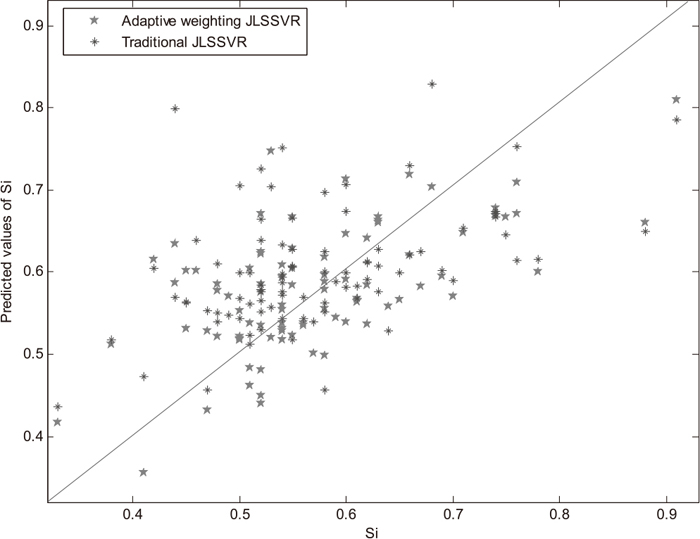57 巻, 1 号
選択された号の論文の29件中1~29を表示しています
- |<
- <
- 1
- >
- >|
Fundamentals of High Temperature Processes
Regular Article
-
原稿種別: Regular Article
2017 年 57 巻 1 号 p. 15-22
発行日: 2017/01/15
公開日: 2017/02/01
[早期公開] 公開日: 2016/11/26PDF形式でダウンロード (1898K) HTML形式で全画面表示 -
原稿種別: Regular Article
2017 年 57 巻 1 号 p. 23-30
発行日: 2017/01/15
公開日: 2017/02/01
PDF形式でダウンロード (1031K) HTML形式で全画面表示 -
原稿種別: Regular Article
2017 年 57 巻 1 号 p. 31-36
発行日: 2017/01/15
公開日: 2017/02/01
PDF形式でダウンロード (1366K) HTML形式で全画面表示
Note
-
原稿種別: Note
2017 年 57 巻 1 号 p. 200-202
発行日: 2017/01/15
公開日: 2017/02/01
[早期公開] 公開日: 2016/10/20PDF形式でダウンロード (616K) HTML形式で全画面表示
Ironmaking
Regular Article
-
原稿種別: Regular Article
2017 年 57 巻 1 号 p. 37-40
発行日: 2017/01/15
公開日: 2017/02/01
[早期公開] 公開日: 2016/11/24PDF形式でダウンロード (643K) HTML形式で全画面表示 -
原稿種別: Regular Article
2017 年 57 巻 1 号 p. 41-47
発行日: 2017/01/15
公開日: 2017/02/01
PDF形式でダウンロード (816K) HTML形式で全画面表示 -
原稿種別: Regular Article
2017 年 57 巻 1 号 p. 48-54
発行日: 2017/01/15
公開日: 2017/02/01
PDF形式でダウンロード (1457K) HTML形式で全画面表示 -
原稿種別: Regular Article
2017 年 57 巻 1 号 p. 55-61
発行日: 2017/01/15
公開日: 2017/02/01
PDF形式でダウンロード (2129K) HTML形式で全画面表示 -
原稿種別: Regular Article
2017 年 57 巻 1 号 p. 62-67
発行日: 2017/01/15
公開日: 2017/02/01
PDF形式でダウンロード (1087K) HTML形式で全画面表示
Steelmaking
Regular Article
-
原稿種別: Regular Article
2017 年 57 巻 1 号 p. 68-75
発行日: 2017/01/15
公開日: 2017/02/01
[早期公開] 公開日: 2016/11/01PDF形式でダウンロード (1367K) HTML形式で全画面表示
Casting and Solidification
Review
-
原稿種別: Review
2017 年 57 巻 1 号 p. 1-14
発行日: 2017/01/15
公開日: 2017/02/01
PDF形式でダウンロード (4013K) HTML形式で全画面表示
Regular Article
-
原稿種別: Regular Article
2017 年 57 巻 1 号 p. 76-83
発行日: 2017/01/15
公開日: 2017/02/01
[早期公開] 公開日: 2016/11/01PDF形式でダウンロード (971K) HTML形式で全画面表示 -
原稿種別: Regular Article
2017 年 57 巻 1 号 p. 84-90
発行日: 2017/01/15
公開日: 2017/02/01
[早期公開] 公開日: 2016/11/10PDF形式でダウンロード (2353K) HTML形式で全画面表示 -
原稿種別: Regular Article
2017 年 57 巻 1 号 p. 91-99
発行日: 2017/01/15
公開日: 2017/02/01
PDF形式でダウンロード (1527K) HTML形式で全画面表示 -
原稿種別: Regular Article
2017 年 57 巻 1 号 p. 100-106
発行日: 2017/01/15
公開日: 2017/02/01
PDF形式でダウンロード (635K) HTML形式で全画面表示
Instrumentation, Control and System Engineering
Regular Article
-
原稿種別: Regular Article
2017 年 57 巻 1 号 p. 107-113
発行日: 2017/01/15
公開日: 2017/02/01
PDF形式でダウンロード (411K) HTML形式で全画面表示 -
原稿種別: Regular Article
2017 年 57 巻 1 号 p. 114-122
発行日: 2017/01/15
公開日: 2017/02/01
[早期公開] 公開日: 2016/11/30PDF形式でダウンロード (1366K) HTML形式で全画面表示 -
原稿種別: Regular Article
2017 年 57 巻 1 号 p. 123-130
発行日: 2017/01/15
公開日: 2017/02/01
[早期公開] 公開日: 2016/11/26PDF形式でダウンロード (625K) HTML形式で全画面表示 -
Online Heat Pattern Control of a Shaft Furnace Based on a Real-time Visualization by Particle Filter原稿種別: Regular Article
2017 年 57 巻 1 号 p. 131-138
発行日: 2017/01/15
公開日: 2017/02/01
PDF形式でダウンロード (957K) HTML形式で全画面表示
Welding and Joining
Regular Article
-
原稿種別: Regular Article
2017 年 57 巻 1 号 p. 139-147
発行日: 2017/01/15
公開日: 2017/02/01
[早期公開] 公開日: 2016/11/12PDF形式でダウンロード (1810K) HTML形式で全画面表示
Note
-
原稿種別: Note
2017 年 57 巻 1 号 p. 203-205
発行日: 2017/01/15
公開日: 2017/02/01
[早期公開] 公開日: 2016/11/30PDF形式でダウンロード (880K) HTML形式で全画面表示
Surface Treatment and Corrosion
Regular Article
-
原稿種別: Regular Article
2017 年 57 巻 1 号 p. 148-154
発行日: 2017/01/15
公開日: 2017/02/01
[早期公開] 公開日: 2016/11/12PDF形式でダウンロード (1379K) HTML形式で全画面表示 -
原稿種別: Regular Article
2017 年 57 巻 1 号 p. 155-161
発行日: 2017/01/15
公開日: 2017/02/01
[早期公開] 公開日: 2016/11/03PDF形式でダウンロード (1212K) HTML形式で全画面表示
Transformations and Microstructures
Regular Article
-
原稿種別: Regular Article
2017 年 57 巻 1 号 p. 162-169
発行日: 2017/01/15
公開日: 2017/02/01
PDF形式でダウンロード (2396K) HTML形式で全画面表示
Mechanical Properties
Regular Article
-
原稿種別: Regular Article
2017 年 57 巻 1 号 p. 170-175
発行日: 2017/01/15
公開日: 2017/02/01
PDF形式でダウンロード (1558K) HTML形式で全画面表示 -
原稿種別: Regular Article
2017 年 57 巻 1 号 p. 176-180
発行日: 2017/01/15
公開日: 2017/02/01
[早期公開] 公開日: 2016/11/12PDF形式でダウンロード (1173K) HTML形式で全画面表示 -
原稿種別: Regular Article
2017 年 57 巻 1 号 p. 181-188
発行日: 2017/01/15
公開日: 2017/02/01
PDF形式でダウンロード (743K) HTML形式で全画面表示
Social and Environmental Engineering
Regular Article
-
原稿種別: Regular Article
2017 年 57 巻 1 号 p. 189-192
発行日: 2017/01/15
公開日: 2017/02/01
[早期公開] 公開日: 2016/11/18PDF形式でダウンロード (530K) HTML形式で全画面表示 -
原稿種別: Regular Article
2017 年 57 巻 1 号 p. 193-199
発行日: 2017/01/15
公開日: 2017/02/01
PDF形式でダウンロード (690K) HTML形式で全画面表示
- |<
- <
- 1
- >
- >|





